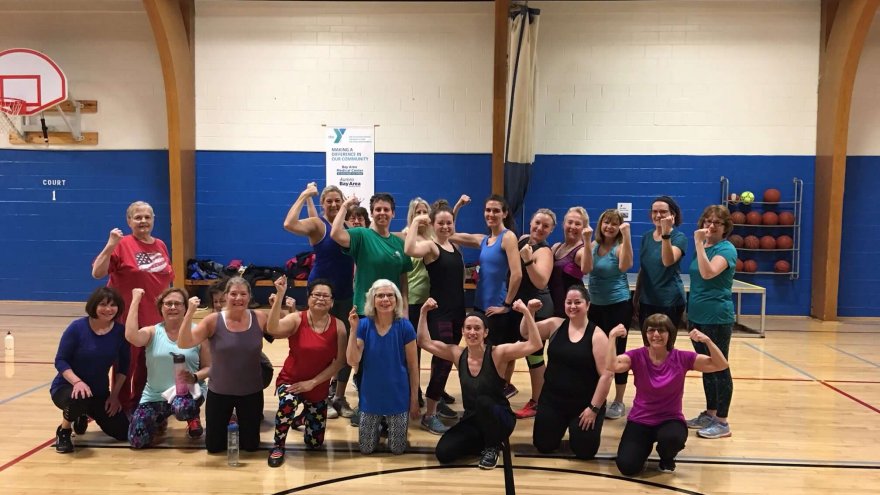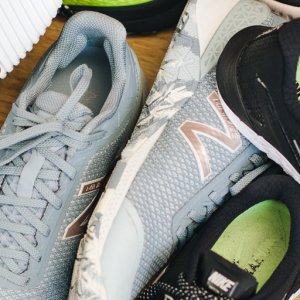Running Shoes VS Cross Training Shoes: Which One Do You Need?

As a young athlete, I did not realize the importance of what I was putting on my feet. As an adult, I weigh each decision carefully and, often, spare no expense.
As an adult, many of us who run have running shoes that we wear for everything. Going for a run? Lace-up your running shoes. Heading to the gym for weights? Just wear the same shoes. A pickup game of basketball with your buddies? Put on those same sneakers.
I question the wisdom of that choice.
Running Shoes Explained

Running is a high impact activity. When you run, your feet hit the ground with the equivalent of three times your body weight. Even for a very small runner, that is a lot of impact!
This is why running shoes are often made with extra cushion. When training as a runner, especially for a distance runner training for anything over a 5K, you are putting a lot of miles on your feet and the rest of your body. Without adequate cushioning to protect your feet, that results in a lot of wear and tear to your body.
Failure to adequately protect your feet can result in other injuries as your body modifies running form to compensate for discomfort.
Besides cushion, running shoes are made for forward motion and heel to toe activities. They are also strategically made to be light, for carrying the runner across the miles. Lastly, most running shoes also have a higher heel drop for more support. (This does not pertain to the Zero Drop shoes that some choose to wear.)
Running Shoes for Specific Running Issues
Some runners have feet that roll inward, which is called pronation. Athletic shoe companies that specialize in running make shoes that cushion and protect the foot, compensating for that pronation to help prevent injury.
Conversely, some runners’ feet roll outward, or supination. Of course, there are also shoes specific to this.
There are shoes for flat-footed people, running shoes for high arches, shoes for no arches, and shoes with minimal support.
Racing Shoes
Serious runners race in shoes called racing flats, but if these runners trained in these shoes it would most certainly result in injury. Racing flats, as their name implies, flat. They are also very light and flexible.

Cross Trainers Explained
What is cross-training? Weight lifting, aerobics, riding a bicycle or taking a HIIT class are all examples of cross-training.
 Why is a specific shoe necessary? Reason number one is because cross-training shoes are made for lateral or side to side motion. Any type of agility training that involves this side to side movement needs a shoe-shaped differently to accommodate that.
Why is a specific shoe necessary? Reason number one is because cross-training shoes are made for lateral or side to side motion. Any type of agility training that involves this side to side movement needs a shoe-shaped differently to accommodate that.
Cross trainers tend to have less cushion. This makes sense because when cross-training, you don’t want to be “sinking down” into your shoes.
Cross trainers often have grooves in the bottom sole for grip within the movement. This is helpful with the aforementioned side to side movement that often is in cross-training activities such as a cardio combat class.
Last, cross-trainers tend to have a flatter bottom for stability on the floor.
Correct Shoes for Injury Prevention
A basketball player would not think of wearing sneakers for a serious game of basketball. Why? We all know the answer to that: high top shoes offer ankle support. So why not be just as smart with other types of athletic activities?
If you are wearing running shoes for workouts that integrate side to side movement, you have a greater chance of experiencing an ankle injury. A person who runs in cross-trainers may not have enough support, which could result in a stress fracture or plantar fasciitis from the continuous pounding of the pavement.
Can’t I Run in a Cross-Training Shoe?
Of course, you can run in a cross-training shoe. Watch a group of elementary students on the playground. They run in sneakers, high tops, Crocs, flip flops, whatever they have on their feet. But that doesn’t make it the best choice!
If you are doing a type of cross-training that involves running and cross training, you are faced with a decision. For example, one of my favorite workouts involves weights, bodyweight exercises, and 400 repeats.
Sample Workout:
- 800 meter warm-up
- 15-20 crunches
- 12-15 shoulder presses with hand weights
- 20-25 squats with a kettlebell
- 25 russian twists with kettlebell
- 10 pushups
- stretch 30 seconds (downward dog)
- 12-15 bench press with hand weights
- walking lunges :60 – :75 seconds
- 400 meter speed work
- Repeat 2 more times
- 800 cool down
So, what kind of shoes to wear because there is running and lifting involved? The decision is easy for me here: running shoes.
Why you ask? First, because there is no heavy lifting and no side to side cutting motion that would necessitate a good cross-training shoe. Second, because when doing speed-work, that extra cushioning is important.
Choosing a Cross Trainer
In choosing a cross-training shoe, it is important to take comfort into consideration. For some people this takes arch support into consideration. People with a normal to high arch tend to gravitate toward a cushion shoe, while people with flatter feet usually prefer a neutral shoe.
Traction is also important in a cross-training shoe, if you intend to participate in activities that require cutting from side to side such as Zumba!, cardio combat or kickboxing type classes. Other types of classes such as spin, cycling or yoga do not necessitate particular traction.
Performance Improvement
It is also true that wearing the correct footwear can help you improve your performance. This is true for both running and cross-training activities.
In addition, your average runner gets approximately 500 miles out of a pair of shoes. Since shoes are not inexpensive, wearing running shoes only for running activity is simply a good choice.
Conclusion: Do I Really Need Both?
The general consensus is that, yes, most athletes who run should have both a cross-training and running shoe.
Latest Articles
 Is It OK to Use Trail Running Shoes on the Road?While trail running shoes can be used on roads, especially in situations where a runner encounters mixed terrains or pref...
Is It OK to Use Trail Running Shoes on the Road?While trail running shoes can be used on roads, especially in situations where a runner encounters mixed terrains or pref... Is Running on a Treadmill Easier Than Running Outside?Runners have their own preferences, whether it is treadmill running, running outside on the road, or exploring trails. So...
Is Running on a Treadmill Easier Than Running Outside?Runners have their own preferences, whether it is treadmill running, running outside on the road, or exploring trails. So... How to Fix Sore Quads After Running?Rest, ice, gentle stretching, and over-the-counter pain relievers can help soothe sore quads after running. Also, ensure ...
How to Fix Sore Quads After Running?Rest, ice, gentle stretching, and over-the-counter pain relievers can help soothe sore quads after running. Also, ensure ... 10 Fruits With The Most Electrolytes to Replace Sports DrinksThese fruits are high in electrolytes such as potassium, magnesium, and calcium, essential for hydration, muscle function...
10 Fruits With The Most Electrolytes to Replace Sports DrinksThese fruits are high in electrolytes such as potassium, magnesium, and calcium, essential for hydration, muscle function...

